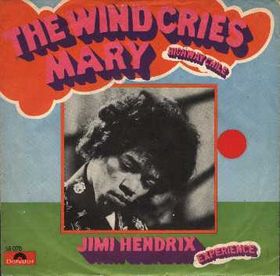 Some songs don’t just start—they erupt. They don’t politely tap your shoulder for attention—they grab you by the collar and drag you into their world. “Break On Through (To the Other Side)” by The Doors is one of those songs, a blistering, restless burst of energy that announced the arrival of a band determined to challenge every rule of what rock music could be. Released in 1967, the track became the opening statement on The Doors’ self-titled debut album, and it remains one of the most electrifying introductions to any band in history. Before Jim Morrison’s voice became permanently linked to myth, rebellion, and tragedy, it was this song that gave listeners their first real glimpse of what was to come—a sound that felt dangerous, poetic, and irresistibly alive.
Some songs don’t just start—they erupt. They don’t politely tap your shoulder for attention—they grab you by the collar and drag you into their world. “Break On Through (To the Other Side)” by The Doors is one of those songs, a blistering, restless burst of energy that announced the arrival of a band determined to challenge every rule of what rock music could be. Released in 1967, the track became the opening statement on The Doors’ self-titled debut album, and it remains one of the most electrifying introductions to any band in history. Before Jim Morrison’s voice became permanently linked to myth, rebellion, and tragedy, it was this song that gave listeners their first real glimpse of what was to come—a sound that felt dangerous, poetic, and irresistibly alive.
The genius of “Break On Through” is how immediate it feels, no matter how many decades have passed. Right from the opening drum pattern—John Densmore hammering out a Latin-jazz-infused rhythm—the song establishes an urgency that never lets up. Then Ray Manzarek’s keyboard descends, swirling like something pulled from a noir dream, followed by Robby Krieger’s guitar slicing through the mix. By the time Morrison growls the first line, it’s clear the band is not offering a safe, polished pop tune—they’re inviting the listener into an experience. And that sense of invitation, danger, and awakening is exactly what has kept the song alive for nearly sixty years.
A Breakthrough in More Ways Than One
When The Doors released “Break On Through” in 1967, the world was shifting socially, culturally, and musically. Rock was moving from teen-focused pop into deeper, stranger, more experimental territory. The Doors arrived right as that shift was happening, ready to ride it and push it further. The track itself served as an anthem of rebellion, not in a cartoonish, shout-at-your-parents way, but in a philosophical sense. Morrison wasn’t just asking listeners to break rules—he was urging them to break consciousness, break barriers, break free from the dull rhythm of everyday life.
Even the delivery of the title phrase carries weight. Morrison’s low, smoky tone makes it feel like both a command and a dare. And because censorship rules of the time forced the band to mute the word “high” in the line “she gets high,” the song even created its own tiny controversy, turning what was meant to be removed into something listeners leaned closer to hear. In a strange way, that edit made the track feel even more subversive—especially once unedited versions surfaced in later releases.
The Power of Densmore and Manzarek
While Morrison often receives the spotlight for his unmistakable vocals and poetic presence, the instrumental foundation of “Break On Through” is essential to its impact. John Densmore’s percussion is relentless, almost hypnotic. His jazz training is on full display—nothing feels stiff or rigid. Instead, the drums constantly pulse and twist, giving the song a sense of motion that matches Morrison’s lyrical push for transcendence.
Ray Manzarek, meanwhile, turns what could have been a traditional rock song into something sharper and stranger. His organ lines serve as the melodic backbone, weaving in and out of Krieger’s guitar with an eerie, carnival-like energy. Without a bassist on most recordings, Manzarek handled the low-end himself using a Fender Rhodes keyboard bass. That combination created a sonic texture that was totally unique, almost alien compared to the typical guitar-driven rock emerging from other bands of the era.
Morrison’s Philosophy in Rock Form
Jim Morrison was always more than a singer—he saw himself as a poet, a storyteller, and an explorer of the subconscious. “Break On Through” captures that spirit better than almost any other Doors song. The lyrics blend simple phrases with mythic undertones, inviting listeners to open their minds to something deeper. Morrison sings of day destroying night and night dividing day, a metaphor that echoes his fascination with duality—light and dark, life and death, consciousness and hallucination.
The chorus—“Break on through to the other side”—became almost a slogan for the counterculture generation, even as Morrison’s idea of “the other side” was far more internal, introspective, and philosophical than political. To him, the “other side” was a place beyond convention, beyond fear, where the self could fully expand. That made the song not just cool or rebellious, but strangely spiritual.
A Sound That Still Feels Urgent
One of the reasons “Break On Through” has endured is the feeling of urgency baked into every note. The song is just over two minutes long, but it feels bigger, faster, and more intense than many rock tracks twice its length. There’s no wasted space—everything feels intentional.
Robby Krieger’s guitar tone is sharp and bright, almost acting like a counterpoint to Manzarek’s darker keys. His solo is short, clean, and catchy, fitting the song’s energy without slipping into indulgence. Meanwhile, Morrison’s voice shifts from smooth to explosive in seconds, creating a sense of unpredictability that makes the track feel live even when it’s been played a thousand times.
It’s that intensity—compressed, controlled, but wild—that makes the song so endlessly replayable. Every listen feels like a burst of adrenaline.
The Doors’ Calling Card
Even though The Doors would go on to write bigger hits—“Light My Fire,” “Riders on the Storm,” and “People Are Strange,” to name a few—“Break On Through” remains one of the most important tracks in their catalog because it served as their introduction. It told the world what kind of band they were: bold, defiant, mysterious, and willing to step into sonic and lyrical territory few mainstream acts were touching at the time.
It also established the chemistry between the four members. In many bands, it’s easy to identify one dominant player. But The Doors operated like a singular organism—every part weaving into the next, creating a sound that felt elemental. The fact that their debut single captured that balance so effortlessly speaks to the lightning-in-a-bottle energy that defined their early years.
Legacy and Cultural Impact
Today, the song stands as one of rock’s essential foundations. It appears in films, television, and commercials, always bringing with it a jolt of 1960s rebellion. It’s the perfect needle-drop song—instantly recognizable, instantly energizing. When filmmakers want to evoke danger, excitement, or the feeling of breaking boundaries, “Break On Through” is often the soundtrack.
The track has also become a staple in retrospectives about the era. It captures the spirit of the late 1960s without feeling tied to it, which is a rare achievement. Where some songs feel dated, “Break On Through” still feels contemporary, its rawness fitting seamlessly into playlists next to modern alternative and psychedelic rock acts.
Most importantly, it serves as a gateway song. Many listeners discover The Doors through this track and then dive deeper into the band’s catalog, exploring the moody poetry of “The End,” the bluesy swagger of “Roadhouse Blues,” or the cinematic beauty of “LA Woman.” In that sense, “Break On Through” continues to do what its title suggests—opening a door to something larger.
A Track That Still Challenges You
What makes “Break On Through (To the Other Side)” so timeless is not just its sound but its challenge. Even today, the song asks listeners to confront the parts of themselves they might hide or ignore. It urges movement—emotional, psychological, spiritual. It’s a rock song that doubles as a push toward self-expansion.
Released in 1967, during a moment of massive cultural upheaval, the song captured a generation’s desire for authenticity and exploration. But its message is universal and enduring. Anyone who’s ever felt stuck, restless, or hungry for change can hear themselves in Morrison’s words.
The Doors may have created plenty of masterpieces, but this track remains their purest distillation: a call to wake up, push forward, and—yes—break on through.
It’s short, fierce, and unforgettable. And like all great rock songs, it refuses to sit quietly in the background. It demands your attention, every single time.


